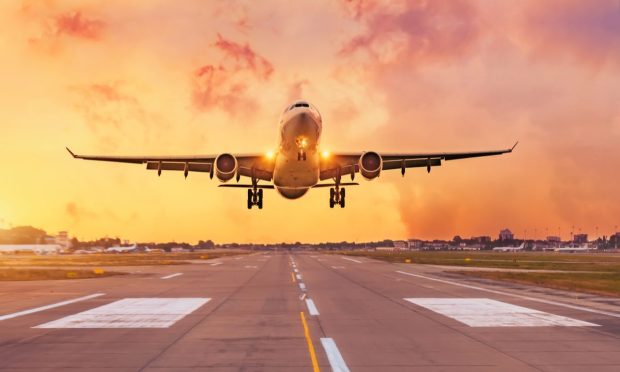Battle Over 5G Between US Airlines, Mobile Carriers Heats Up

The CEOs of major U.S. airlines and cargo carries warned of a “catastrophic” aviation crisis on Wednesday (Jan. 19) when AT&T and Verizon start deploying new 5G services. Meanwhile, China is preparing the ground for 6G or sixth generation internet, according to China’s 14th Five-Year Plan, the document where Chinas State Council lays out their priorities for the coming years.
In a letter signed by the largest U.S. carriers and two of the biggest logistic groups, UPS and FedEx, the companies called on Joe Biden’s administration to block the rollout of 5G towers located within two miles of airports runways, which the Federal Aviation Authority (FAA) has identified as being prone to disruption.
The airlines warned that the new C-Band 5G service could interfere with sensitive airplanes instruments such as altimeters, impacting low-visibility operations. The FAA has planned buffer zones around 50 airports that have wireless transmitters in proximity to runways, to avoid any potential interference when the planes are landing.
However, this measure doesn’t seem to be enough for the airlines, which wrote in their letter, “Unless our major hubs are cleared to fly, the vast majority of the traveling and shipping public will essentially be grounded.”
AT&T and Verizon, which won nearly all of the C-Band spectrum needed to deploy 5G technology, are set to start the rollout on Wednesday (Jan. 19), after agreeing a delay for two weeks due to the same concerns raised by the regulator on early January.
See also: AT&T, Verizon’s 5G Plans Clashes With Federal Agency
The 5G rollout debate centers around how far the 5G stations should be from the airports’ runways.
Airlines argue that the same 5G services have been deployed in Europe without risking aviation safety. One of the reasons for this difference may be the radio bands. In the U.S., 5G is allocated to a range of between 3.7GHz and 3.98GHz. This is closer to the 4.2GHz-4.4GHz frequency for altimeters than in Europe, which has allocated the 3.4GHz-3.8GHz range for 5G. In Europe, altimeter filters will be better at stopping 5G signals, which will result in less potential interference.
In the short-term, it is likely that airlines, telecom carriers and the government will find a solution to guarantee the safety of passengers. Yet, this situation has put the spotlight on how important it is to have a coherent strategy to fully benefit from 5G technology.
A new wave of innovation, products and services will depend on the rollout of 5G technology, along with many of today’s connected devices that consumers use daily. For a smooth 5G rollout to happen, access to a wireless network is also vital, but this can’t come at the cost of risking aviation safety or interfering with other devices operating in the same radio band.
China is also betting on 5G applications for its industrial growth, as it has shown in the 14th five-year plan. Beijing wants to promote the commercial deployment and large-scale application of 5G, and it has started pilot projects in key areas such as smart transport, smart logistics, smart energy and smart medicine.
China is aiming to boost the digital economy and the connectivity in the country, and next-generation technologies like 6G internet and big data are key to this policy. Cloud computing, IoT, industrial internet, blockchain, AI, virtual reality and augmented reality are priorities in the plan, most of which need high speed internet and 5G applications.
Plans for 6G are still in the research and development stage, as there isn’t a common agreement on what 6G is. However, China is working on the creation of international standards for 6G. This could benefit the country given that only China and the U.S. seems to be equipped to lead these efforts.
